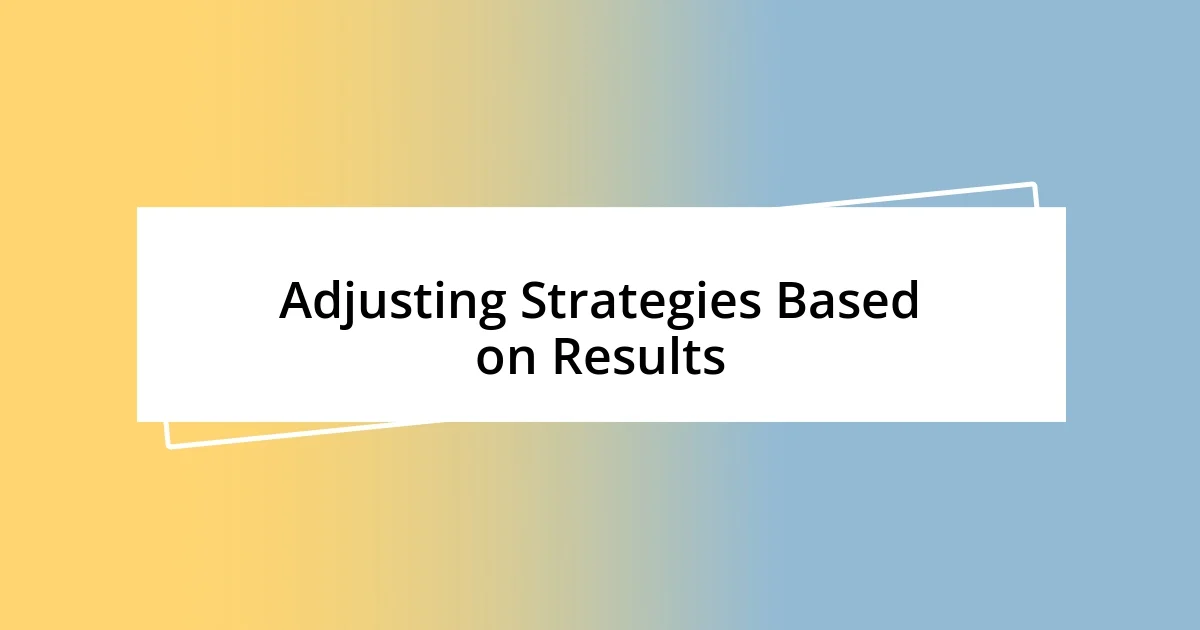Key takeaways:
- Understanding SEO involves mastering both on-page (keywords, content quality) and off-page (backlinks, social media) optimization strategies to enhance website visibility.
- Setting up essential SEO tools like Google Analytics and keyword research tools is crucial for tracking performance and making informed adjustments.
- Regularly analyzing SEO metrics and competitor performance allows for strategic pivots, helping improve traffic and engagement based on data-driven insights.

Understanding SEO Basics
SEO, or Search Engine Optimization, is the art and science of enhancing your online presence so that it ranks higher in search engine results. I remember the first time I realized just how crucial this was; it felt like unlocking a door to endless possibilities. Why do some websites soar to the top, while others languish on the second or third page? It’s not just luck—it’s about understanding and implementing effective SEO strategies.
At its core, SEO involves two key elements: on-page and off-page optimization. On-page refers to the tweaks you make to your own website—think keywords, content quality, and site structure. I often experiment with these factors. For instance, after optimizing a blog post with targeted keywords, I witnessed a noticeable uptick in traffic. It was exhilarating. Can you imagine what that kind of improvement could mean for your own site?
Additionally, off-page SEO focuses on the actions taken outside your website, such as backlinks and social media engagement. Backlinks are often seen as votes of confidence from other sites, helping establish your credibility. When I secured a backlink from a popular blog, it felt like receiving a stamp of approval. It made me realize that every little effort in understanding these basics of SEO contributes to a bigger picture of digital success. What’s your experience with SEO?

Setting Up SEO Tools
Setting up your SEO tools is a critical step that brings clarity and efficiency to your optimization practices. I recall the first time I installed Google Analytics; it was like opening a treasure chest of data. Tracking user behavior and understanding traffic sources transformed my approach and helped me make informed decisions that directly impacted my site’s performance. There’s a sense of empowerment that comes from having the right tools at your fingertips.
To get started with setting up your SEO tools, consider the following essentials:
- Google Analytics: For tracking website traffic and user behavior.
- Google Search Console: To monitor your site’s presence in Google search results.
- SEO Browser Extensions: Tools like MozBar or Keywords Everywhere can instantly show you vital SEO metrics.
- Keyword Research Tools: Programs like SEMrush or Ahrefs can help identify relevant keywords for your niche.
- Content Management System (CMS) Plugins: If you use WordPress, plugins like Yoast SEO can simplify the optimization process.
By methodically integrating these tools, I found I was not only streamlining my workflows but also enhancing my understanding of SEO dynamics. It’s amazing how the right setup can set the stage for the growth and success of your online presence.

Conducting Keyword Research
When it comes to conducting keyword research, I can’t stress enough how foundational it is for effective SEO. Picture this: I’m sitting at my desk, digging into keyword tools like Ubersuggest and Ahrefs. It’s thrilling to uncover terms that aren’t just popular but also relevant to my audience. Identifying keywords with a mix of search volume and competition has always felt like finding hidden gems. So, how do you figure out which keywords to use?
I usually start by brainstorming seed keywords related to my niche and then let the tools do their magic. I find phrases that resonate with my goals or the questions my audience is asking. For example, during my recent project on sustainable living, I discovered that “eco-friendly home tips” had a decent search volume but low competition. It was a golden opportunity. Have you found a keyword that truly resonated with your content?
I also make it a point to analyze competitor keywords. Seeing what others are ranking for often provides insights I hadn’t considered. When I saw my competitor outranking me for a vital term, it motivated me to refine my content and target that keyword strategically. The entire process, while analytical, is deeply creative and sometimes surprisingly emotional as I navigate my niche’s landscape.
| Keyword Research Methods | Description |
|---|---|
| Brainstorming | Generating initial keyword ideas based on your understanding of the niche. |
| Keyword Tools | Using tools like Ahrefs or Ubersuggest to discover search volume and competition. |
| Competitor Analysis | Identifying keywords that competitors rank for to find potential opportunities. |

Optimizing On-Page Elements
Optimizing on-page elements is where the magic truly begins for any SEO strategy. I remember the first time I meticulously structured my page titles and meta descriptions; it felt exhilarating to see how these small adjustments could significantly boost click-through rates. Have you ever noticed how a well-crafted title can intrigue you into clicking a link? It’s that immediate impact that drives me to prioritize these elements. Short, punchy, and relevant titles paired with engaging meta descriptions can make your content stand out in the crowded search results.
Another essential aspect is header tags, which I often see overlooked. Personally, I treat H1 tags like the headline of a news article, ensuring they reflect the essence of what the page is about. Once, I modified my H2 and H3 tags to create a clearer hierarchy, and the results were phenomenal. I found that not only did user engagement improve, but it also helped search engines better understand my content’s structure. Remember, headers are like signposts guiding both visitors and search bots through your content.
Internal linking is equally vital. On my site, I’ve developed a habit of linking related articles to each other; it creates a web of knowledge that keeps readers engaged longer. One time, I noticed that a piece on SEO best practices performed better after I linked it to a beginner’s guide I had written a few weeks prior. It made me realize how interconnected content can cultivate a loyal audience. When you internal link effectively, it not only aids in navigation but also spreads the link equity around, enhancing overall SEO. How do you use internal linking in your SEO routine?

Building Quality Backlinks
Building quality backlinks is a cornerstone of a successful SEO strategy. I vividly remember the time when I landed a guest post on a well-respected blog in my industry. It was an exhilarating feeling to see that my expertise was valued enough to be shared, and that link not only improved my site’s authority but also drove a surge of targeted traffic. It really made me realize how choosing the right sites for backlinks can amplify your overall online presence. Have you ever thought about which websites could provide the best opportunities for backlinks in your niche?
In my experience, reaching out personally to blog owners can yield remarkable results. I often draft personalized emails, highlighting how I can provide value to their audience. When I received my first positive response, it was such a rewarding moment—it felt like a validation of my efforts and expertise. Crafting those relationships does require effort, but I find that having genuine conversations always leads to fruitful outcomes. Do you prioritize building relationships with other content creators?
Another strategy that works wonders is participating in online communities related to my industry. Engaging in forums or social media groups not only allows me to share my knowledge but also opens doors to backlink opportunities. I remember joining a local Facebook group and sharing insights that led to my content being referenced by other members. That unexpected connection turned into a high-quality backlink—proof that authenticity and participation can pay off. Have you considered how your interactions could lead to such opportunities?

Tracking SEO Performance Metrics
Tracking the performance of SEO metrics is pivotal for any digital strategy. I remember when I first dived into Google Analytics—it felt overwhelming at first, but gaining insights into organic traffic was like discovering a treasure chest. It’s stunning how metrics like bounce rate and average session duration can reveal users’ engagement levels. How often do you find yourself dissecting these details to enhance your strategy?
Another tool I utilized was SEMrush, which provided in-depth keyword performance tracking. One day, I stumbled upon a specific keyword that had low competition but high search volume. It sparked excitement in me, leading to the creation of a new targeted piece that attracted a significant number of visitors. Have you ever found a hidden gem in your keyword research?
I also pay close attention to ranking fluctuations over time. Implementing consistent tracking allows me to identify what works and what doesn’t; there’s a comforting rhythm to it. For instance, after adjusting my content to focus on user intent, I noticed a steady rise in rankings and traffic. It’s incredible how the numbers can tell the story behind your efforts—what do your metrics reveal about your SEO journey?

Adjusting Strategies Based on Results
When adjusting my SEO strategies based on results, I often find myself reflecting on what the data is really telling me. For example, there was a period when I noticed a drop in traffic after a site redesign. It was like a jolt, making me reconsider my approach to both UX and content. I dug into the analytics, discovered the issue was with page loading speeds, and made the necessary adjustments. Have you ever experienced a similar wake-up call through your metrics?
I always pay close attention to which keywords are driving traffic. There was an instance where I was surprised to find a long-tail keyword unexpectedly gaining traction. It led me to create content that was more focused on that specific topic. As a result, my audience engagement skyrocketed. Have you ever had that “aha” moment when you realized that pivoting your focus could lead to significant outcomes?
Another strategy I employ is to regularly analyze competitor performance. I recall encountering a competitor who was ranking well for a keyword I’d overlooked. That pushed me to rethink my tactics and refine my own content strategy. It’s fascinating how competitive analysis not only highlights gaps but also ignites creativity to outperform others. What steps do you take to stay ahead in your niche?













